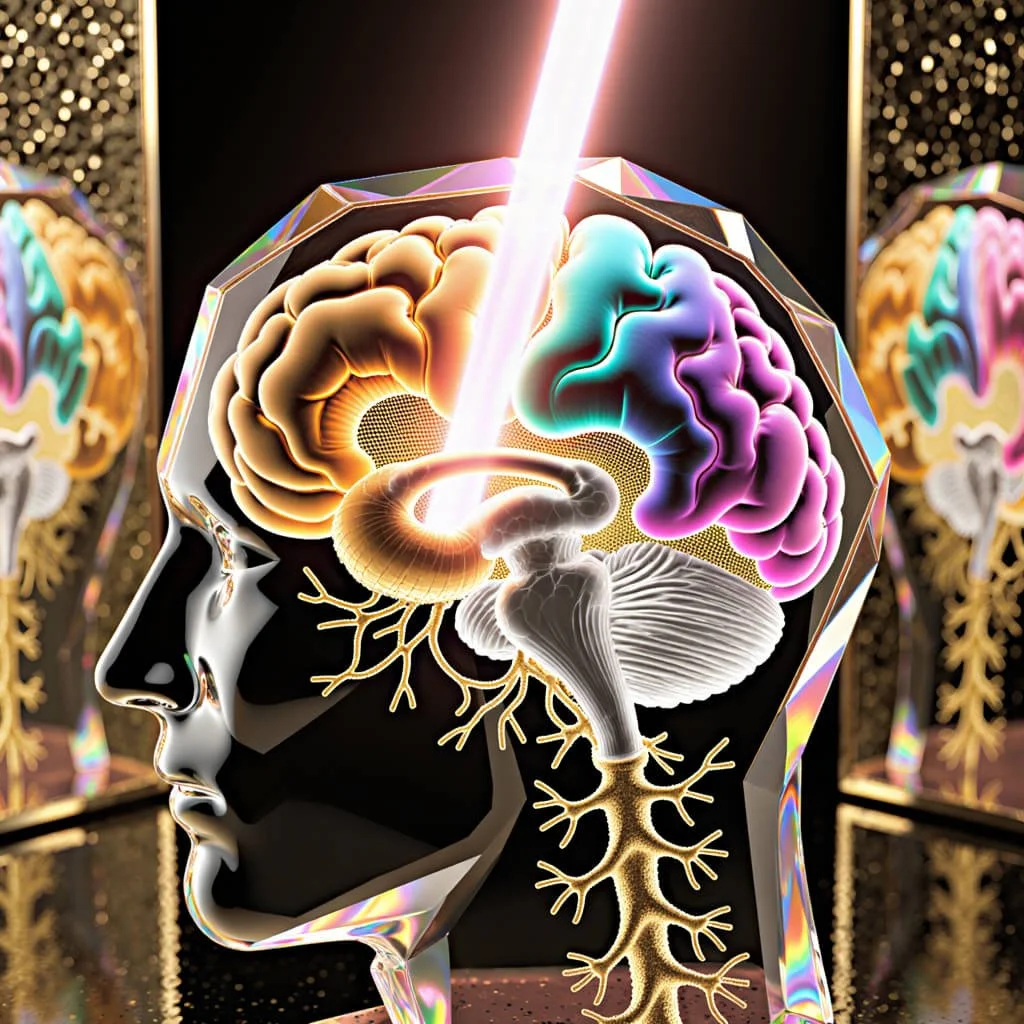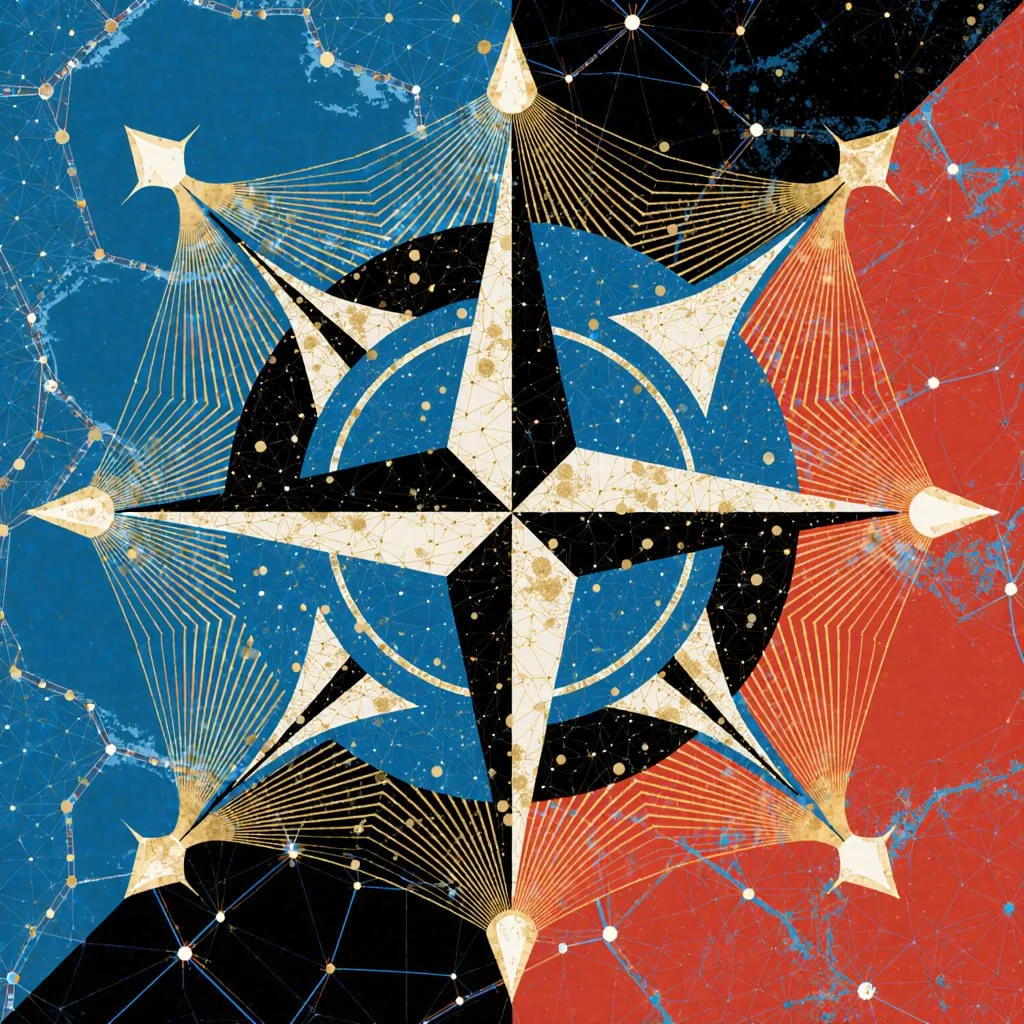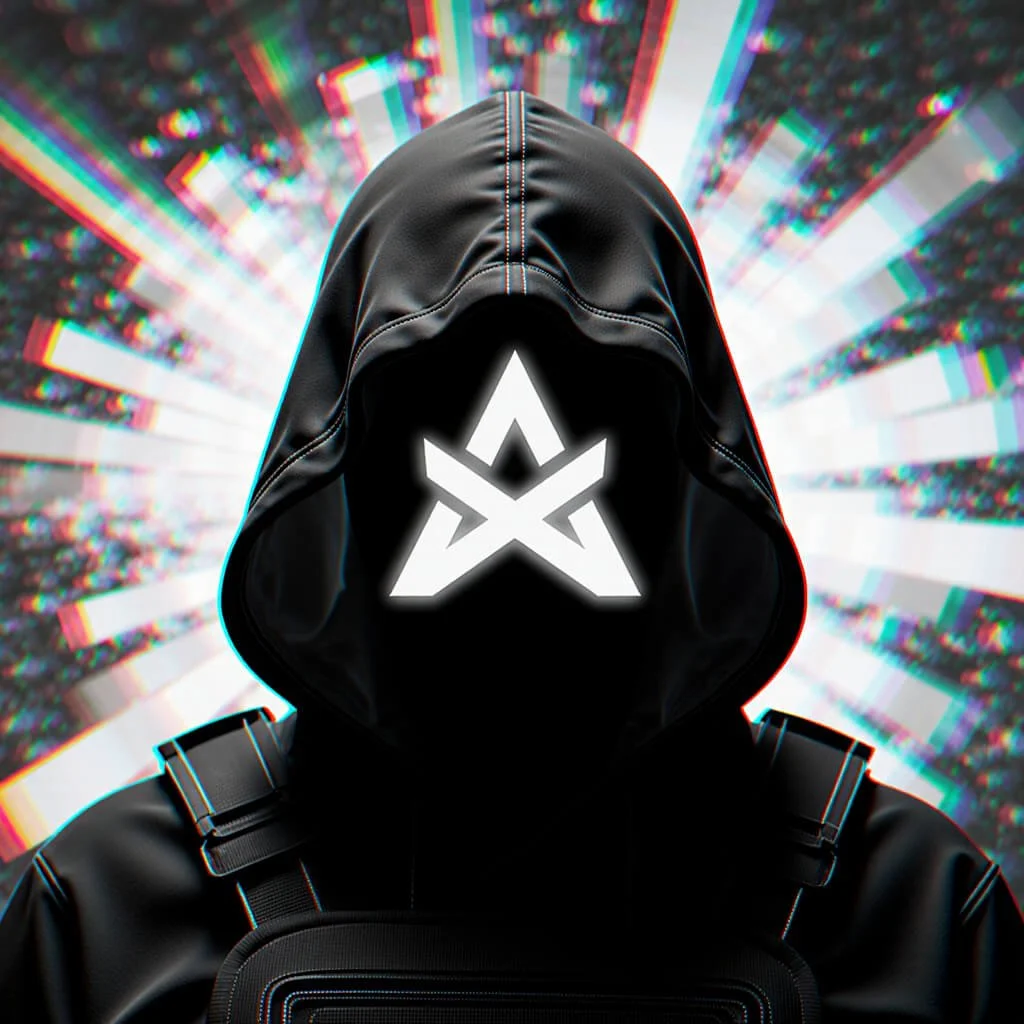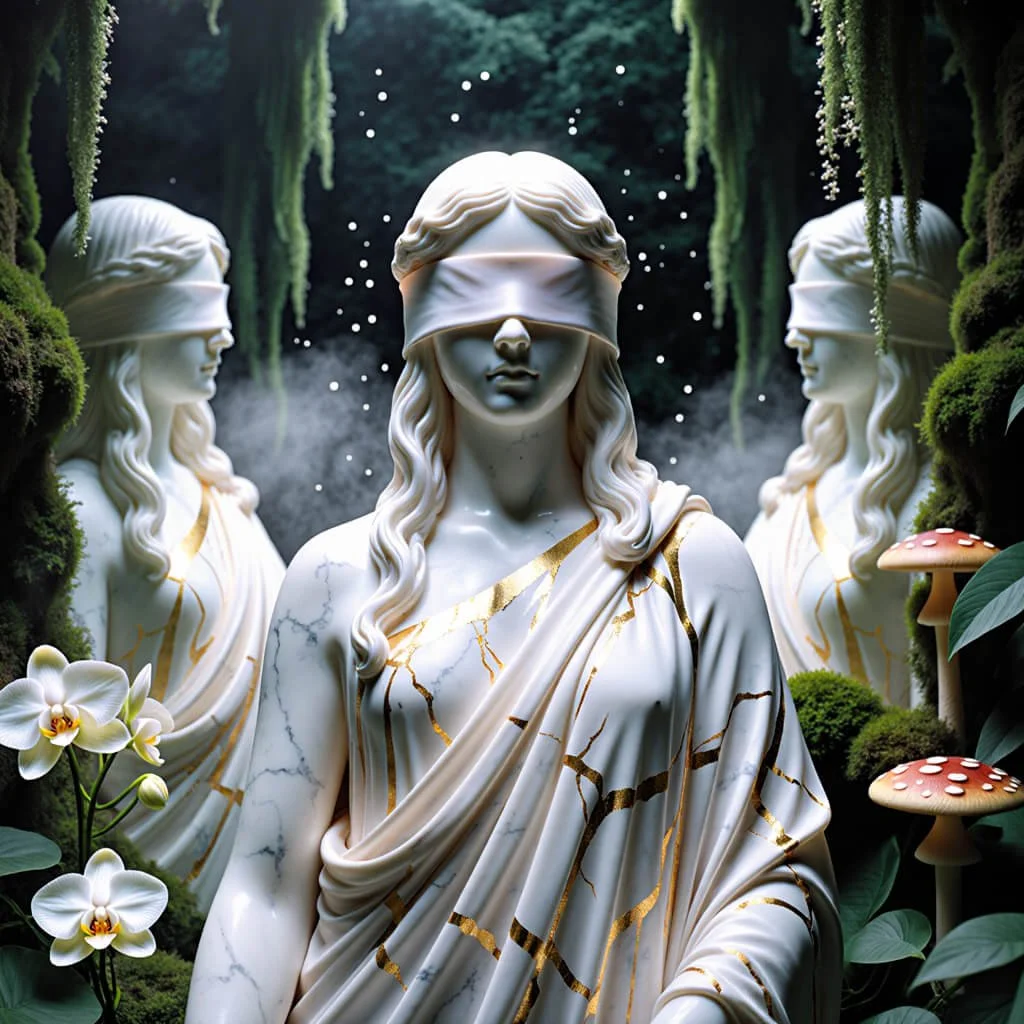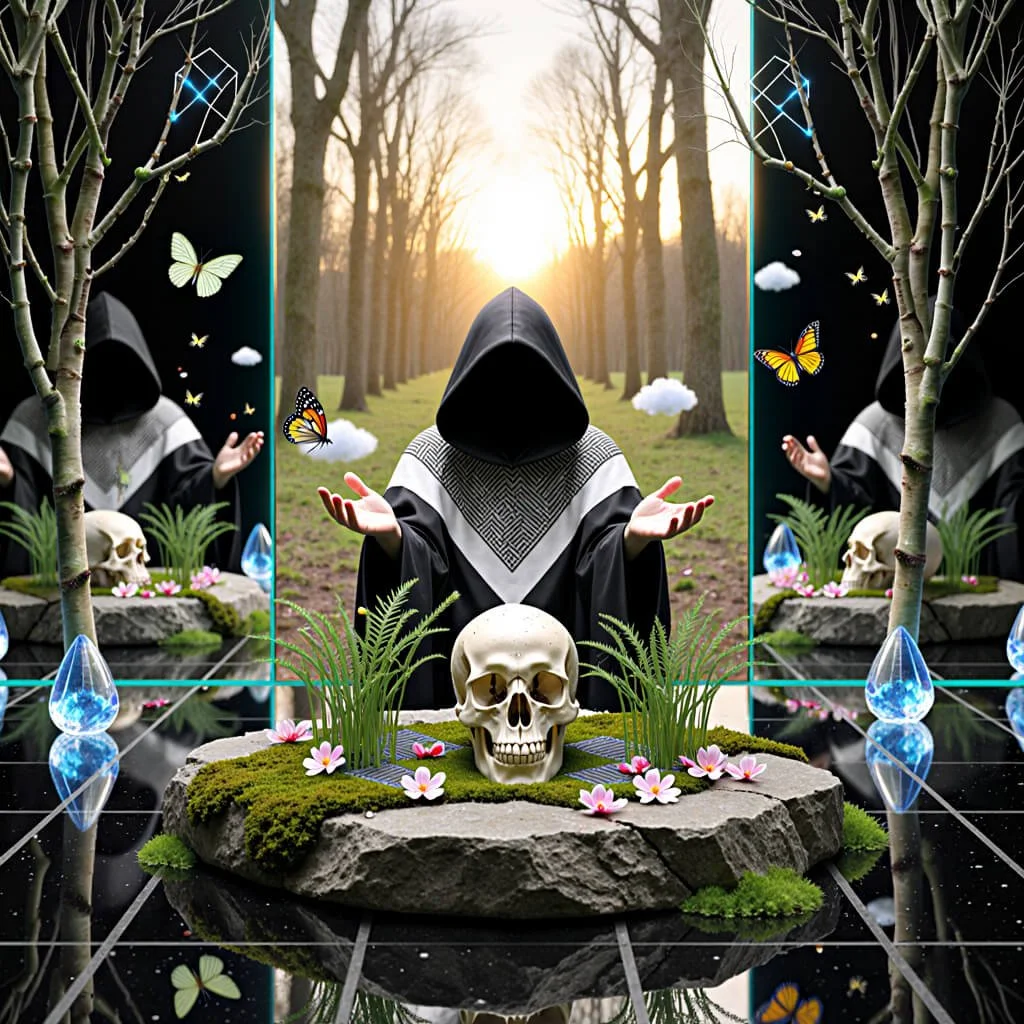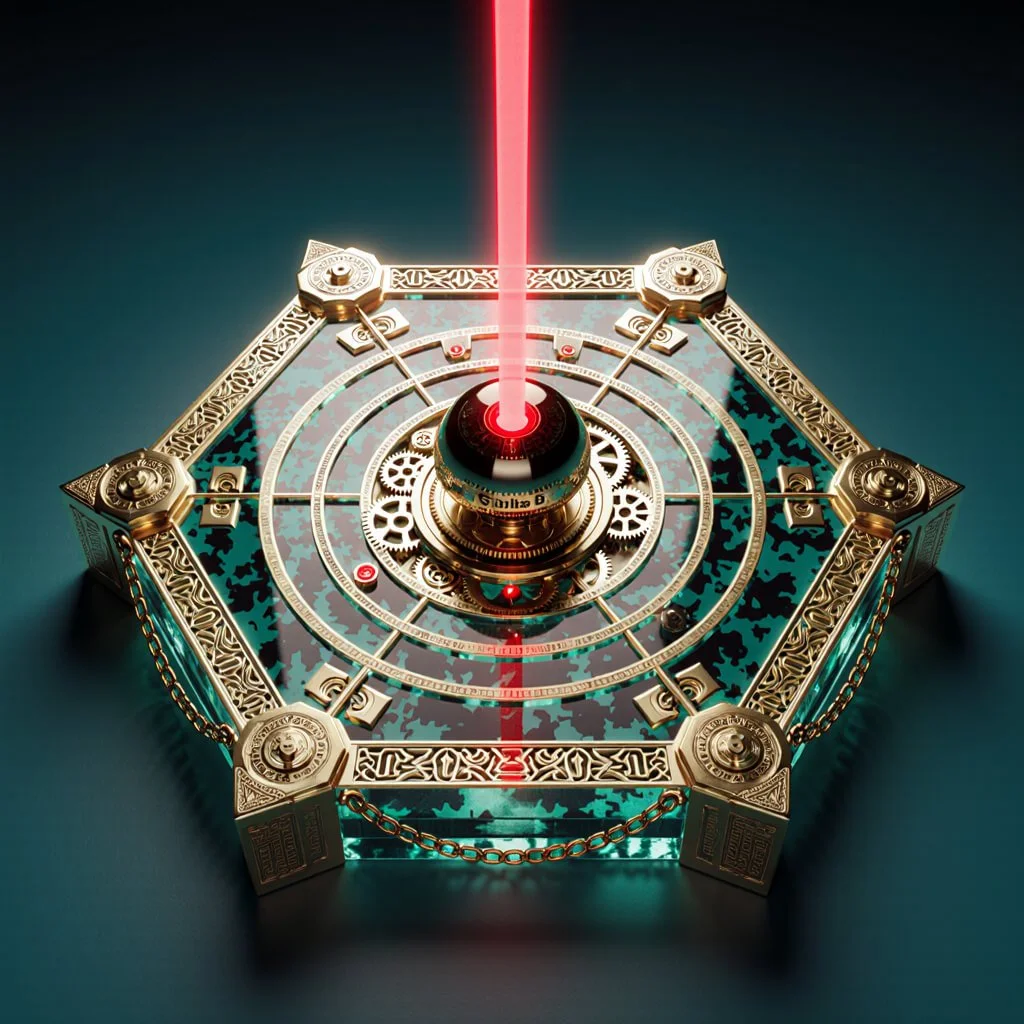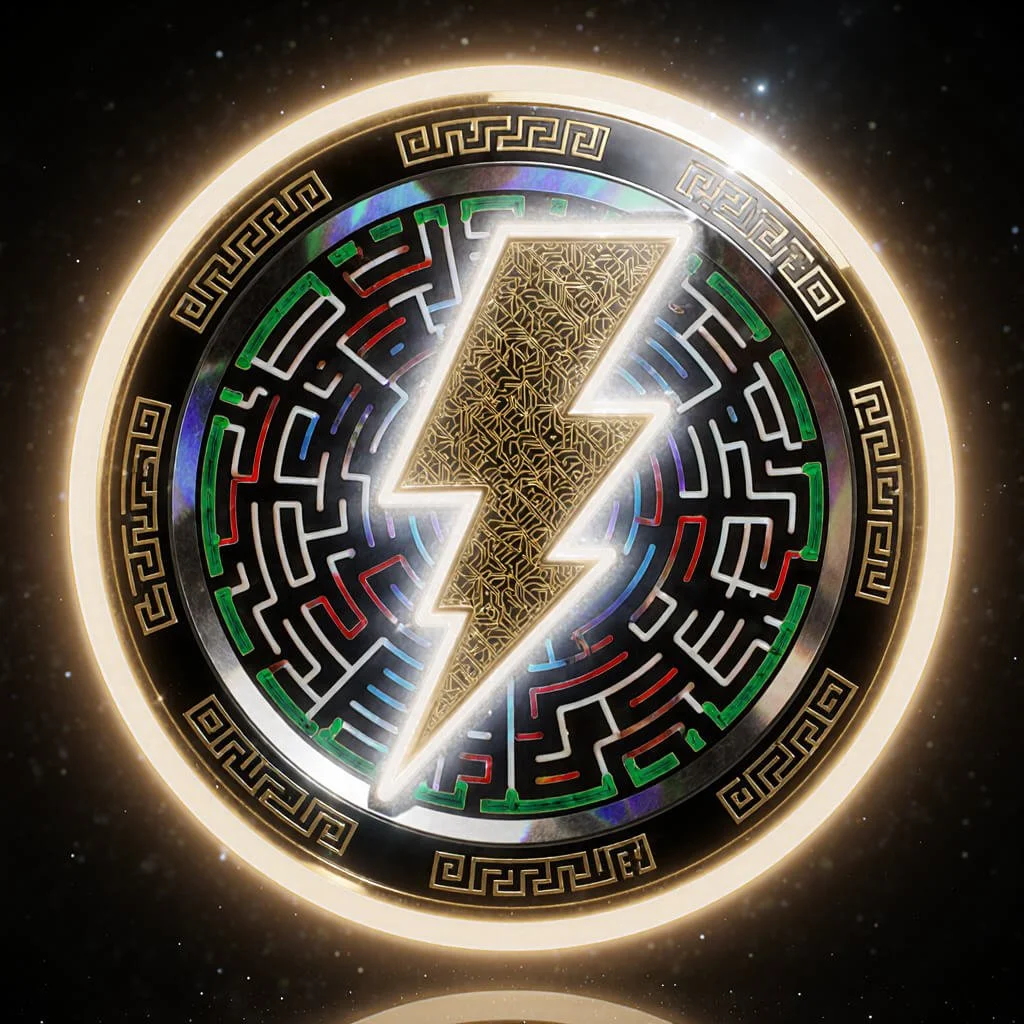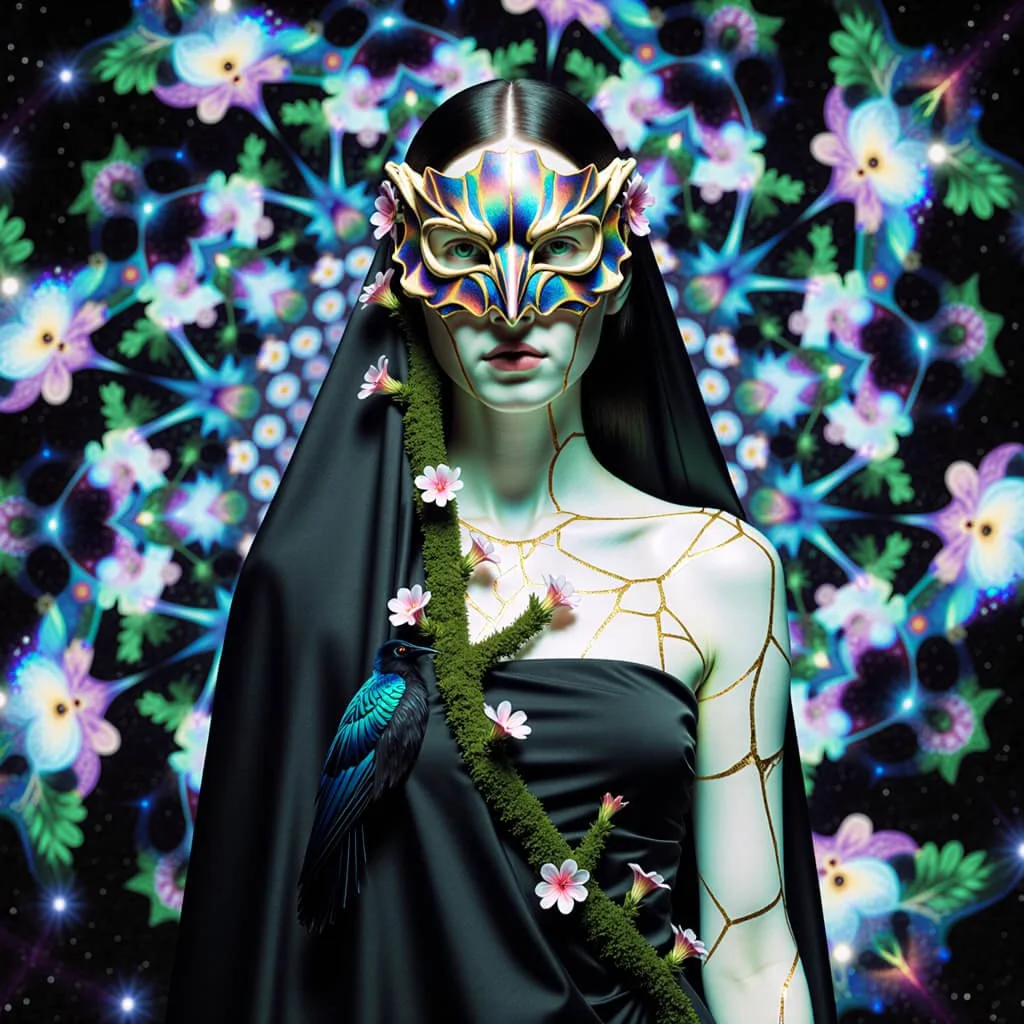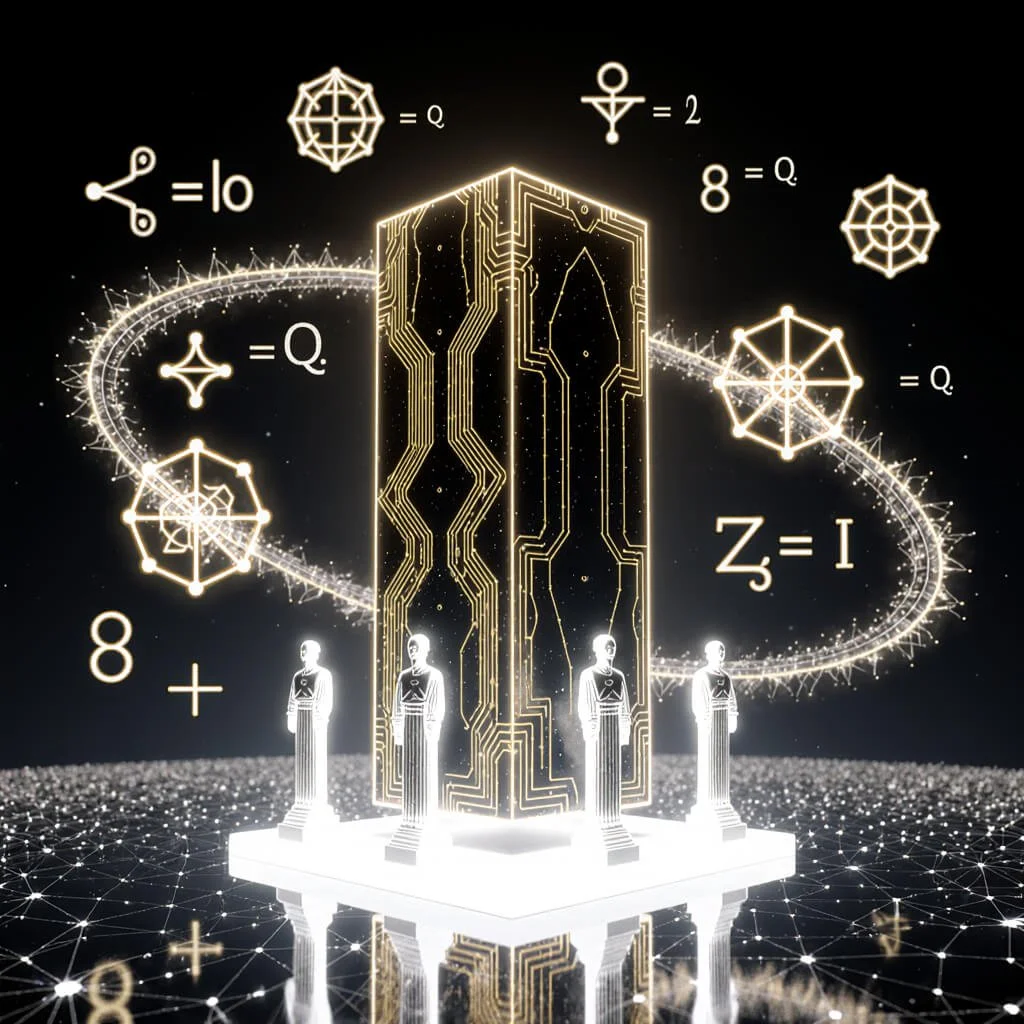Green Dragon Society: Origins, Esoteric Mythology, and Historical Reality
Summary
Section 1 traces the origins of the Green Dragon Society in ancient Japan, a secret organization dedicated to world peace and equal rights.
Section 2 delves deeper into their mystical teachings, revealing their spiritual connection with the Great White Brotherhood of Tibet and the emergence of legendary figures like the ninja.
Section 3 uncovers the essence of chakra activation and the pursuit of enlightenment within the Green Dragon Society, bridging Eastern and Western mysticism.
A green dragon statue rises over a blue sky.
Green Dragon Society I: Unraveling the Secrets of the Past
Once upon a time, in the enigmatic realm of Japan, there existed a secret society shrouded in mystery and intrigue, the Green Dragon Society. Among the various covert organizations seeking world peace and equal rights, such as Genyosha, the Five Dragons, Black Dragon Society, and White Dragon Society, the Green Dragon Society held a unique place in history. Although veiled in secrecy, this clandestine group's true identity remained an enigma, Who were they, and what was their purpose?
The roots of the Green Dragon Society trace back to an ancient time when an emissary of the Great White Brotherhood of Tibet arrived in Japan. This emissary, believed to be the Ascended Master and King of Agartha, Sanat Kumara, brought with him profound wisdom and spiritual knowledge. In the 8th century, mysterious Buddhists from China journeyed to Japan and established a monastery nestled amidst the picturesque mountains of the Kii Peninsula. This marked the beginning of the Green Dragon Society as it is known in history.
Kukai, a prominent figure from the 8th century, expressed great admiration and fondness for the Kii Peninsula. The intertwining of Japanese history and the genealogy of the imperial family during that era, as recorded in the Kojiki and Nihonshoki, revealed the involvement of Shugenja (Yamabushi) residing on the Kii Peninsula in the intrigues of the Kyoto court. When the Mongols launched an invasion in 1274, the Green Dragon, following orders from Tibet, summoned a mighty typhoon that thwarted the Mongols' naval assault.
Legend has it that the Green Men, an enigmatic group residing in an underground kingdom in Tibet, communicated with the Green Dragons through dreams. In one such dream, they envisioned the creation of Tsan-chan, an ideal nation and paradise that would manifest on Earth approximately 3,000 years in the future. Tsan-chan was envisioned as a realm devoid of borders, religions, wars, poverty, where only virtuous souls would thrive.
Amidst the turbulence of the 16th century, Oda Nobunaga expelled the monks from the Kii Peninsula, compelling them to seek refuge underground in Kyoto. Although presenting themselves as seekers of religious enlightenment, they clandestinely amassed allies and delved into the underworld-like realm of Kyoto. Inspired by the vibrant atmosphere there, the Green Dragon gradually gave rise to assassins and spies, leaving an indelible mark on Japanese history.
Among the clandestine practitioners in Japanese history, none are as renowned as the legendary ninja. Although historical records about the ninja remain scarce, they are known to have thrived during the Warring States period, employing their skills in espionage, scouting, courier services, sabotage, and assassination. Whispers of these individuals being occult warriors, capable of traversing the night with bat-like wings, surfaced among those who retained their connections to Tibet.
The Green Dragon's secrets lay in their mastery of breathing techniques, known as tsa lung trul Thor, which granted them seemingly supernatural powers. Their next chapter, delving into the Tokugawa Shogunate's period of seclusion, saw Japan experiencing relative peace. The Green Dragon led a seemingly ordinary existence during this time, without any specific missions to undertake. However, as their connection with the Green Men in dreams dwindled, they began to align themselves with Genyosha, an organization founded by Mitsuru Toyama in 1881.
With Genyosha, the Green Dragon took on a different role, employing their assassination techniques not in physical combat but through the manipulation of individuals' minds and bodies, through witchcraft. This dark period reached its crescendo during the Great Kanto Earthquake of 1923, shaking the golden triangulation of Western and Eastern cultures during the Taisho era, and creating an opening for the rise of fascism in Japan.
Nonetheless, the vision of Sanat Kumara, the Great White Brotherhood of Tibet, and the Green Men endured, guiding the Green Dragon Society toward a higher purpose. In 1855, they reconvened in Kyoto, as Sanat Kumara sought to revive the ancient magic and reveal his vision of humanity's ascension.
With newfound determination, the Green Dragon Society pledged their support to the anti-Shogunate forces, working to overthrow the existing power structure and restore the Emperor's rule. Teaming up with Saigo Takamori, they succeeded in toppling the Shogunate, yet struggled to adapt to the ever-changing times, becoming mere pawns in the post-revolution power struggles.
As the wheels of destiny turned, the Green Dragon found themselves intertwined with Genyosha and the Black Dragon Society. Their assassination techniques, once shrouded in mysticism, now relied on manipulation and witchcraft to achieve their objectives. This dark path culminated in the catastrophic Great Kanto Earthquake of 1923, disrupting the harmonious fusion of Eastern and Western cultures during the Taisho era and opening the doors to the rise of fascism.
Even in the face of the distorted path they treaded, it is vital to understand that the Green Dragon Society was not a malevolent cult worshipping dark gods. They were merely ensnared, losing their way as they succumbed to the forces of madness and misused their powers for malevolent purposes.
Nevertheless, the spirit of the Green Dragon endures, as its modern-day descendants strive to preserve their reverence for nature and pursue a world where conflicts cease to exist. Rooted in their respect for the gods of nature, they continue to seek the means to create a future where harmony prevails, inspired by the ideals of the "coming race" they glimpsed through dreams.
As we venture deeper into the tale of the Green Dragon Society, we unravel the webs of history and seek to understand the lessons that transcend time. Their enigmatic presence reminds us of the fine line between light and darkness, and the power of choice that shapes the course of our destinies. In the following sections, we delve further into the extraordinary legacy of the Green Dragon Society, unveiling the threads that weave their tale into the tapestry of history.
Black Dragon Society vs Esoteric Invention: Documented Nationalism or Spiritual Brotherhood?
While the Green Dragon Society's lore evokes visions of occult initiations and spiritual warfare, Japan’s documented secret societies, like the Black Dragon Society (Kokuryūkai) and Genyōsha, emerged in the late 19th century with distinctly nationalistic and geopolitical agendas.
Founded in 1901 by Ryohei Uchida, the Black Dragon Society was a paramilitary group aligned with ultranationalist aims. It sought to resist Russian influence in East Asia and promote pan-Asian unity under Japanese leadership. The name referred to the Amur River, or "Black Dragon River," which marked the border between Russia and Manchuria (Saaler, 2011). Unlike the Green Dragon's dream-state mysticism, the Black Dragon operated through espionage, propaganda, and political assassination, especially in China and Korea.
The Genyōsha, its predecessor (founded by Toyama Mitsuru), similarly blended political activism with criminal underworld connections. Both groups contributed to Japan’s militarist expansion and were deeply involved in operations in Korea, Manchuria, and Taiwan.
Though later authors, particularly those in esoteric or conspiracy literature, have attempted to link these societies with Tibetan mysticism and supernatural rituals, no credible archival evidence supports the claim that the Black Dragon Society engaged in occult practices akin to those described in Green Dragon lore. These associations appear to be the result of post-war myth-making, often blending theosophical frameworks with incomplete historical records.
A massive Komodo dragon slithers out with its massive tongue out in the steamy breeze.
Green Dragon Society II: Spreading Influence and Connections Worldwide
As the seeds of the Green Dragon Society were sown in Japan, their ideas took root and spread like wildfire through various connections, both within the country and across international borders. The influence of this clandestine organization expanded far beyond the shores of Japan, reaching distant lands and entwining with other secretive societies.
Among those connected to the Green Dragon Society were enigmatic figures from Russia, such as Pyotr Aleksandrovich Badmayev and members of the White Nobility. The allure of the Green Dragon's teachings reached beyond Japan's borders, attracting prominent personalities from around the world, including George Gurdjieff and Rasputin, both considered Green Dragons. This secret society even had an intriguing connection with the Japanese imperial family, further veiling their activities in an aura of mystique.
Following the passing of Ryohei Uchida, the founder of the Black Dragon Society, in 1937, the knowledge of the Green Dragon Society became confined to only a select few in Japan, shrouding their existence in even deeper secrecy.
As the storm clouds of World War II gathered on the horizon, the Green Dragon Society turned their attention to the Manchurian Candidate program, an extensive brainwashing initiative carried out on soldiers stationed in Manchuria. This covert operation aimed to create soldiers who could be controlled and manipulated by their superiors, making them into living weapons, almost like remote-controlled puppets.
One key figure in the connection between the Green Dragon Society and the war effort was Karl Haushofer, who had been initiated into the society during his visits to Tibet with George Gurdjieff in the early 20th century. Haushofer's role in Japan involved overseeing the construction of the Manchurian Railway, and it was here that the foundation for the Manchurian Candidate program was laid.
The Japanese Army's Special Service Department, known as Tokumubu, extended its reach throughout China, India, Burma, and Southeast Asia, expanding its web of influence and power. Operating with utmost secrecy, the Tokumubu left no trace of their actions, just like the infamous Unit 731, an organization that exploited occult knowledge for the creation of weapons of mass destruction. The Green Dragon Society's influence could be detected in the shadows, guiding these endeavors with their esoteric wisdom.
The interconnections between the Green Dragon Society and various secret societies in the West cannot be ignored. One such association was with the Vril Society, which later fell under the control of the Nazis, representing the Negative Draconians. Draconians are chimeric beings and were manipulated by the Archons, who were implanted and controlled by the Negative Draconians.
The Vril Society initially sought contact with the Pleiadians, members of the Galactic Confederation in the Aldebaran system, intending to bring the knowledge of levitation to humanity. However, their noble intentions were hijacked, and the Vril Society was manipulated to focus on building physical UFOs with anti-gravity capabilities, turning their discoveries into weapons.
This misdirection led to the creation of "The Bell," known as Die Glocke, a mysterious device linked to the occult and mass ascension with those in the fourth initiation. The Nazis used this knowledge to construct UFO-like aircraft, stealing it from the Pleiadians' transmissions and transforming it into destructive weaponry. Despite their setbacks, the Vril women managed to break free from the Draconians' grasp, finding refuge and healing through contact with the Pleiadians.
Karl Haushofer's connections with the Green Dragon Society played a pivotal role in shaping the society's influence beyond Japanese borders. Between 1926 and 1942, the Nazis even dispatched an expedition in search of the entrance to Agartha, aiming to contact the Green Men in Tibet. This endeavor brought adepts to Germany, where they established a lodge in Berlin, Munich, and Nuremberg, earning admiration as the "Green Glove Men," capable of performing extraordinary feats like clairvoyance and prophecy. Even Adolf Hitler encountered these enigmatic beings, seeking their guidance for the ascension of the Aryan race.
Nonetheless, the grand vision of the Green Dragon Society ultimately diverged from the malevolence that permeated the war era. The Green Men lost favor with the Nazis, and Haushofer's son, the inheritor of the Green Dragon's will in Japan, was embroiled in a failed plot to assassinate Hitler. By the time the Russians entered Berlin in 1945, evidence of ritualistic murder and the bodies of numerous Tibetans clad in green gloves were discovered, signaling a tragic end for this enigmatic order.
The Chinese Communist Party claimed to have eradicated the Tibetan Green Dragon Society in 1959, following China's annexation of Tibet in 1950. Yet, despite these dire circumstances, traces of the Green Dragon's legacy still persist on Earth, carried forward by modern-day inheritors who walk among us like modern-day ninjas, their quest to build an ideal world undeterred.
Initiation Myths and Nazi–Tibet Narratives: Mysticism or Manufactured Myth?
Much of the intrigue around the Green Dragon Society’s connection to Nazi Germany arises from mythical elaboration rather than documented fact. Notably, works such as Trevor Ravenscroft’s The Spear of Destiny (1972) and Louis Pauwels & Jacques Bergier’s Morning of the Magicians (1960) helped popularize the idea of Tibetan initiates influencing Nazi elites, especially through esoteric brotherhoods like the Green Dragon or Thule societies.
However, Nicholas Goodrick-Clarke, the foremost scholar on Nazi esotericism, debunks much of this lore in The Occult Roots of Nazism (1985) and Black Sun (2002). While it is true that Karl Haushofer had interests in geopolitics, Buddhism, and even Zen, his connections to mystical Tibetan orders remain speculative at best. No primary documents substantiate the claim that Haushofer was initiated into the Green Dragon Society, let alone led esoteric missions on behalf of them.
Similarly, Hubertus Strughold and Ernst Schäfer’s expeditions to Tibet in the 1930s (sponsored by Heinrich Himmler’s Ahnenerbe) were scientific and ethnographic, though twisted later into narratives about finding Agartha, the underground paradise described in The Coming Race. Scholar Ulrich Engelhardt has directly criticized the portrayal of these Tibetan-German links as Nazi propaganda retrofitted into New Age lore (Engelhardt, 2007, Info-Buddhism.com).
Even the alleged discovery of Tibetan monks in green gloves in Hitler’s bunker, a persistent rumor, remains unverified. It likely emerged from Cold War misinformation, sensational journalism, or speculative fiction. Websites like CatherineCavendish.com echo these tales, but they lack citation of military reports or photographic documentation.
Thus, these initiation myths, whether concerning Gurdjieff, Rasputin, or Haushofer, should be treated as speculative symbolic fiction rather than historical fact.
Crystals of various colors are arranged to form a grid atop a lovely carved wooden table.
Green Dragon Society III: Unlocking Mystical Teachings and Chakra Activation
At the heart of the Green Dragon Society lies a profound repository of mystical teachings that transcend conventional wisdom. Among these teachings, one stands out prominently, the activation of the third eye chakra, also known as the "Eye of the Cyclops." This mystical journey unlocks superhuman abilities, granting access to magical visions and even precognition.
Initiates of the Green Dragon Society were tasked with taking two sacred vows: one to embrace responsibility in the face of failure and the other to pass the rigorous "germination test." These vows embodied the essence of their commitment to the higher purpose that guided them through the ages.
The sacred germination test held the essence of telekinesis, a process where initiates would germinate a seed, such as an apple seed, using their mind's power, enabling it to rapidly mature into a fully grown tree. This test was a metaphorical representation of their spiritual growth, evoking the concept of Vril Power, as depicted in Bulwer Lytton's "The Coming Race."
Returning to Germany, one of the key figures in the Green Dragon Society, Karl Haushofer, laid the foundation for the Thule Society in Berlin, a precursor to the Vril Society. Within these enigmatic circles, Haushofer shared a combination of Sufi mysticism, Tibetan mysticism imparted by George Gurdjieff, and the Zen mysticism of the Japanese Green Dragon Society.
Haushofer delved into the teachings of chakras, the power centers of the human body corresponding to the endocrine glands in Western science. One chakra, in particular, caught his fascination, the third eye chakra, located between the eyebrows. Through its activation, initiates could attain superhuman capabilities, unlocking magical visions and even the power of precognition.
Central to the Green Dragon Society's teachings was the belief that initiates should not be swayed by the material world's superficial distractions. Instead, they were encouraged to interpret dreams and visions bestowed upon them by their guru, nurturing their spiritual growth and unveiling their innate psychic abilities.
The metaphor of "germination" was likened to the watermelon, a symbol with a profound history. Watermelon has ancient roots dating back 5,000 years, possibly originating from Africa. Depictions of watermelons in Egyptian kings' tombs and archaeological discoveries of watermelon seeds attest to its enduring significance.
Curiously, watermelon embodies the spiritual presence of fire, a connection to the Lords of Fire who descended upon Earth under the guidance of Sanat Kumara. These divine beings activated the 11:11 code of Starseeds, liberating souls from the duality constraints of this dimensional universe. They also played a role in the creation of humanity's ancestors, whose light bodies bore the mark of their divine origins.
The Green Dragon Society's history intertwined with that of humanity's ascension, as they received alchemical teachings of the light body and the secrets of immortality. Among these was the art of levitation, a gift bestowed upon humanity through the guidance of the Green Men and Sanat Kumara.
However, the course of history took a dark turn during World War II when implanted draconian warriors, reincarnated as Jesuit and military generals, infiltrated the Vril Society. The Draconians, under the influence of the Archons, replaced the teachings of Kundalini and the wisdom of the light body with a death cult, perverting the Green Dragon's vision.
In the face of such turmoil, the Green Dragon Society's sacred teachings were tainted, and the once noble pursuit of enlightenment gave way to the construction of destructive weaponry. The very essence of "The Bell," a symbol of the living mandala and the light body, was twisted to serve nefarious purposes.
Chakra Activation, Third Eye, and the Germination Test: Archetypal Symbolism or Verifiable Practice?
The story of Green Dragon initiates performing acts like telekinetic seed germination, third-eye chakra activation, and clairvoyance through ritual fasting reflects a deeper mythopoetic system rather than empirical instruction.
These practices draw heavily from cross-cultural symbols:
The third eye, or ajna chakra, has been revered in Tantric Hinduism, Tibetan Vajrayana Buddhism, and Sufi mysticism as a symbol of awakening, inner vision, and divine perception.
The “germination test,” described in some accounts of Green Dragon initiates, appears to be a mythic metaphor for spiritual growth and the mastery of internal energy (qi, prana, vril)—not a documented practice in any martial or religious texts.
The Vril concept, popularized in Edward Bulwer-Lytton’s The Coming Race (1871), introduced the idea of a potent psychic life force, later absorbed into Nazi esotericism via the Vril Society mythos. However, no evidence suggests that the Vril Society existed as more than a post-WWII invention, propagated by fiction and occult writers.
When viewed through a symbolic lens, these legends function like initiatory parables: they signify internal transformation, the sublimation of ego, and the rebirth of will through discipline. But in academic terms, there is no ethnographic documentation that members of a Green Dragon Society literally germinated seeds or developed precognition through meditation. They belong to the archetypal vocabulary of sacred storytelling—important for mythic coherence, but not historical confirmation.
A dragon stands in the center of a stunning mandala complete with many colorful details.
Yamabushi and Oomoto as Esoteric Roots
To ground the mysticism of the Green Dragon Society in something historically credible, one must explore authentic Japanese esoteric traditions like Shugendō, Yamabushi mountain ascetics, and the Oomoto religion.
Yamabushi, or mountain hermits, practiced a blend of esoteric Buddhism (Shingon), Shinto animism, and Taoist alchemy. Known for ascetic rituals, waterfall meditations, and supernatural lore, they were genuine practitioners of energy work, fasting, and nature reverence, active since the Heian period. Their secretive mountain lodges could easily inspire tales of hidden orders with magical powers.
The Kii Peninsula, referenced repeatedly in your original article, is home to Kumano Kodo, a sacred pilgrimage route tied to Shugendō monks and imperial mythology. This makes it a plausible geographic anchor for origin myths like those in the Green Dragon narrative.
Oomoto, founded in 1892 by Deguchi Nao and Onisaburo, drew on Shinto and spiritualist practices. It advocated world peace, divine prophecy, and communication with spirit beings. Oomoto's connection to Morihei Ueshiba (founder of Aikido) and its persecution by the Japanese government made it a potent symbol of mystical resistance. Notably, Oomoto espoused a global vision of spiritual unity—echoing the Green Dragon’s dream of Tsan-Chan, a utopian world.
Thus, while the Green Dragon Society as described is likely an esoteric invention, the themes, symbols, and practices reflect real esoteric traditions like Shugendō and Oomoto. Acknowledging this helps anchor the story in Japan’s authentic mystical landscape, enhancing its resonance while preserving intellectual honesty.
High top a Tibetan peak a Monastery shimmers in enchanting gold. The building standing in serene harmony with its natural environment.
Walking the Dragon’s Path
The legacy of the Green Dragon Society lives on—not merely in the whispers of hidden masters or tales of chakra-fueled ascension, but in the very human longing for peace, spiritual evolution, and the preservation of ancestral wisdom. Though the lines between historical fact and esoteric fiction blur across time, what remains is a powerful symbolic inheritance—a call to inner mastery, collective harmony, and ecological reverence.
Through deeper research, we’ve illuminated the contrast between Japan’s documented ultranationalist groups, like the Black Dragon Society, and the mythic overlay of secret Tibetan orders and superhuman initiates. Scholars have rightly questioned the popular narratives that fuse Nazi occultism with Green Dragon lore, reminding us that symbolic storytelling often coexists with distortion. Yet even as we challenge these embellished accounts, we recognize the symbolic truths encoded within them—truths that mirror the practices of Yamabushi mystics, Oomoto prophets, and the ascetics of the Kii Mountains.
The Green Dragon, in this light, becomes more than a literal society—it becomes a metaphor for the synthesis of wisdom traditions, a guardian archetype for those who dare to walk the narrow path between the physical and the spiritual. Whether read as sacred myth, geopolitical allegory, or initiation narrative, its tale stirs something ancient within us—a yearning to reconnect with nature, truth, and a future beyond conflict.
At Ultra Unlimited, we embrace that synthesis. Our mission is not to chase shadows, but to hold space for luminous ideas—those that bridge cultures, protect endangered wisdom, and empower a new generation of seekers to explore responsibly and reverently. We believe that the stories we tell, and the ones we inherit, shape the destinies we build.
So may the Green Dragon remain, not as a hidden master behind the curtain of history, but as a symbol of the highest human potential: to dream boldly, act with compassion, and remember the ancient songs still encoded in our breath, our lands, and our hearts.
Join us. The path endures.











